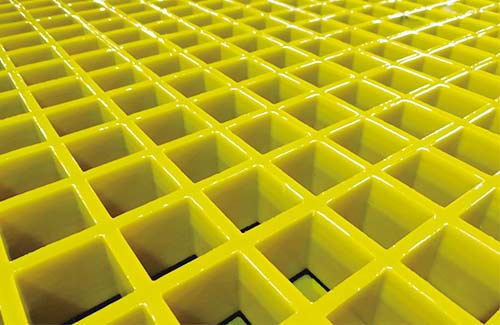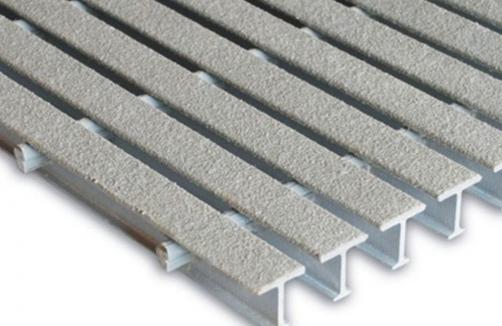In the bustling and unique environment of textile mills, walkways play a vital role in ensuring the smooth flow of operations and the safety of workers. These walkways are constantly exposed to a range of challenges, from high humidity and temperature fluctuations to the presence of fine textile fibers and potential chemical spills. Selecting the right material for textile mill walkways is crucial, and Fiberglass Reinforced Plastic (FRP) grating has emerged as an excellent solution, offering a multitude of benefits that meet the specific demands of this industry.
Textile manufacturing involves various processes that can create a moist and humid atmosphere. For instance, during the dyeing and finishing stages, large amounts of water are used, leading to elevated humidity levels in the mill. Traditional materials like metal or wood can deteriorate over time in such conditions, with metal prone to rust and wood susceptible to warping and rot. FRP grating, on the other hand, is highly resistant to moisture – induced degradation. Its non – metallic composition and the protective properties of the polymer matrix ensure that it remains unaffected by high humidity, maintaining its structural integrity and surface quality for an extended period. This resistance to moisture helps prevent the weakening of the walkway structure, reducing the risk of accidents caused by damaged flooring.
The presence of fine textile fibers is another characteristic feature of textile mills. These fibers can easily accumulate on walkway surfaces, creating a slippery and potentially hazardous situation for workers. Additionally, they can clog traditional grating materials with small openings, reducing the effectiveness of ventilation and drainage systems. FRP grating can be designed with appropriate mesh sizes and surface finishes to address these issues. Its smooth surface discourages fiber adhesion, allowing the fibers to be easily swept or vacuumed away during regular cleaning. The carefully engineered mesh configuration ensures that the grating allows for proper air circulation and drainage while preventing the passage of larger debris. This helps maintain a clean and safe walking surface, minimizing the risk of slips, trips, and falls due to fiber accumulation.
Textile mills often use a variety of chemicals in their production processes, such as dyes, bleaches, and finishing agents. Spills of these chemicals can occur during handling or in the event of equipment malfunctions, and they can be highly corrosive to many traditional materials. FRP grating exhibits excellent chemical resistance, protecting the walkways from damage caused by accidental chemical spills. Whether it’s exposure to acidic dyes or alkaline bleaching agents, the grating’s composite structure can withstand the chemical onslaught without significant degradation. This not only extends the lifespan of the walkway but also helps safeguard the surrounding environment from potential chemical contamination.
Electrostatic discharge (ESD) is a concern in textile mills, as the friction generated during the processing of textiles can lead to the build – up of static electricity. Static charges can attract textile fibers, causing them to cling to equipment and products, and can also pose a risk of sparking in areas where flammable substances may be present. FRP grating can be manufactured with anti – static properties. By incorporating special additives into the polymer matrix during production, the grating’s surface resistivity can be adjusted to prevent the accumulation of static electricity. This anti – static feature helps keep the work environment free from fiber – clinging issues and reduces the potential for ESD – related hazards, enhancing both the quality of the textile production process and the safety of the workplace.
The installation and maintenance of walkways in textile mills need to be efficient to minimize disruption to production. FRP grating offers ease of installation due to its lightweight nature. Compared to heavy metal gratings, it requires less specialized equipment and fewer labor resources for handling and installation, resulting in cost savings and shorter installation times. In terms of maintenance, FRP grating’s resistance to moisture, chemicals, and fiber accumulation means that it requires minimal upkeep. Regular cleaning with simple cleaning agents is usually sufficient to keep the grating in good condition, eliminating the need for complex and time – consuming maintenance procedures such as painting, sealing, or frequent repairs.
Customization is also a significant advantage of FRP grating for textile mill walkways. It can be tailored to fit the specific layout and requirements of different areas within the mill. For example, areas with heavier foot traffic or where equipment is frequently moved can be fitted with FRP grating with higher load – bearing capacities. The grating can also be fabricated in different colors, which can be used for color – coding different work zones, safety markings, or to indicate specific operational areas, improving overall workplace organization and safety awareness among workers.
In conclusion, FRP grating is a perfect fit for textile mill walkways. Its resistance to moisture, ability to handle textile fiber challenges, chemical resistance, anti – static properties, ease of installation, and customization options make it highly suitable for the demanding and unique environment of textile manufacturing. By choosing FRP grating, textile mills can enhance the safety and durability of their walkways, improve operational efficiency, and contribute to the overall success of their production processes. As the textile industry continues to evolve and seek more reliable and efficient solutions, FRP grating is likely to become an increasingly popular choice for walkway construction and maintenance.
FRP Grating: A Perfect Fit for Textile Mill Walkways
こちらもおすすめ







